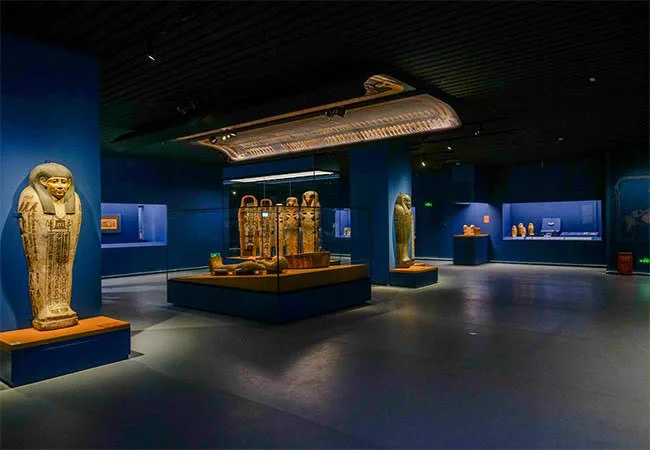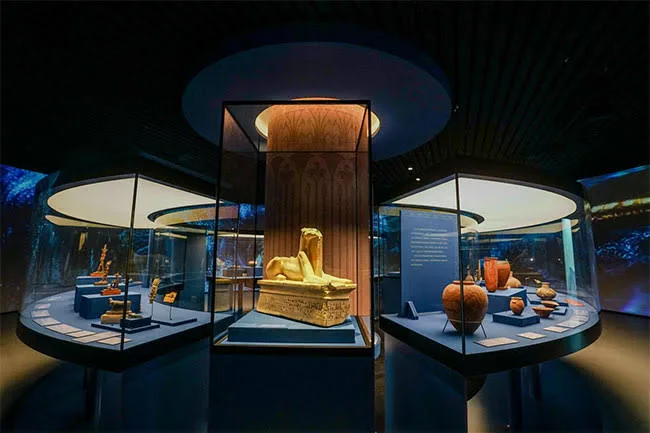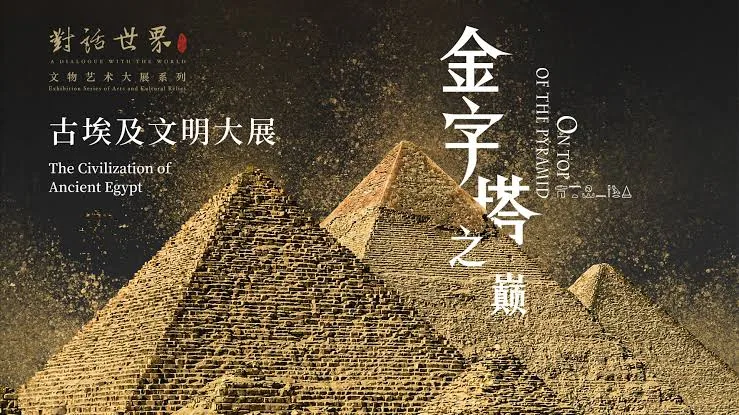China -Shanghai
According to the Chinese Agency said that
The Shanghai Museum recently announced that the exhibition “On Top of the Pyramid: The Civilisation of Ancient Egypt”, organised in cooperation with the Museum and the Supreme Council of Antiquities in Egypt, has received more than two million visits since its opening in July last year, setting a record for the largest number of visitors to a single paid exhibition among international museums.

The exhibition “On Top of the Pyramid” is a major exhibition in which the Chinese-Egyptian sides cooperate to provide a comprehensive interpretation of the civilisation of ancient Egypt and display the latest archeological discoveries. The exhibition lasts 13 months until August this year.
The exhibition includes more than 780 ancient Egyptian artefacts and dozens of ancient Chinese artefacts, and highlights the theme “Dialogue and mutual learning between the two civilisations” to showcase the civilisation of ancient Egypt from a Chinese perspective.

The Shanghai Museum has chosen a leading multimedia team in China to create an immersive exhibition hall, where it turned the “Book of the Dead” into a captivating animated film and the sound of the yogurt cat appeared in the background music of the “Secret of Saqqara” showroom, giving a lot of detail to Chinese and foreign audiences in a way that they feel like they have travelled through time and space.
In recent years, China and several Arab countries have held joint exhibitions of cultural monuments in which ancient civilisations from historical periods and different geographical areas were exhibited. For example, in early 2024, the Imperial Palace Museum in Beijing collaborated with the Royal Commission for Al-Ula Governorate, Saudi Arabia to launch the exhibition “Al-Ula, Oasis of Wonders in the Arabian Peninsula”, which premiered to the Chinese public the picturesque landscapes and rich archeological and cultural heritage of the city of Al-Ula in northwestern Saudi Arabia, and attracted wide attention from the Chinese public.

The sample survey data shows that the exhibition “On Top of the Pyramid: Ancient Egypt’s Civilisation” is paying nearly 10 billion yuan (about 1.39 billion US dollars) of mass consumption in Shanghai. On China’s social media platform Xiahongshu, there are more than 1.69 million posts related to search words such as “tickets at the top of the pyramid” and Internet users enthusiastically share ticket advice and visit experiences.
So far, the exhibition has achieved total operating revenues of 580 million yuan (about 80.62 million US dollars), with the Shanghai Museum expecting a total visit to exceed 2.5 million visits, and its total revenue will exceed 700 million yuan (about 97.31 million US dollars).
In addition to the exhibition of cultural monuments, Egypt itself attracts more Chinese tourists. According to Egyptian official data, the number of Chinese tourists who visited Egypt in 2024 increased by 63 percent compared to the previous year, while the aforementioned exhibition provided a clear model of the fruits of profitable cooperation between the ancient civilisations of the Chinese and Egyptian sides.
Benefitting from China’s position as the world’s largest country in the design and production of toys, the Shanghai Museum has designed more than a thousand types of specialised cultural and creative products for the exhibition, including clothing, home furniture, trendy toys, accessories, stationery and other popular products online.
Thanks to interactive photos, writings and videos with artificial intelligence technology and other means, a travelling exhibition inspired by the exhibition “On Top of the Pyramid: The Civilisation of Ancient Egypt” was held in local communities in Shanghai, where this Sino-Arab cultural exchange received wider public participation.

Thanks to modern concepts of exhibition management and the growing cultural and creative economy, the economic and social benefits of cultural exchange have reached a new level.
In this context, Zhou Xiao Boo, Director of Shanghai Museum, said: “Through this exhibition, we highlight the unique civilisational perspective, aesthetics of exhibition management, operational creativity, cultural inclusion and China’s economic strength. I think museums can play a key role in understanding contemporary China.”
